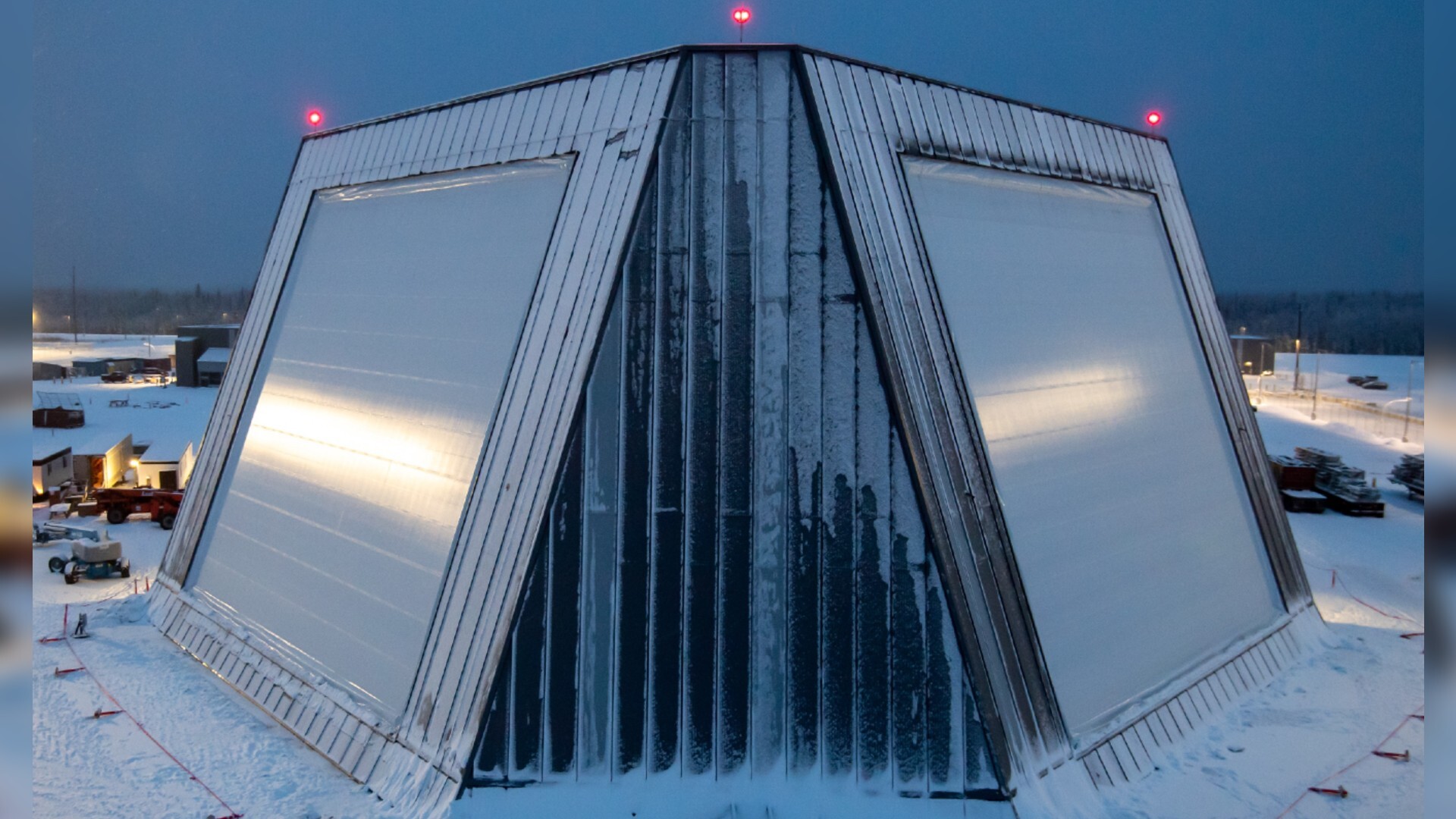Small Asteroid Passes Between Satellites and Earth
Astronomers spotted an asteroid this week after it had flown past Earth on a course that took it so close to the planet it was below the orbits of some satellites.
The space rock was relatively small, however, and would not have posed any danger had it plunged into the atmosphere.
The object, named 2004 YD5, was about 16 feet (5 meters) wide, though that's a rough estimate based on its distance and assumed reflectivity. Had it entered the atmosphere, it would have exploded high up, experts figure.
Satellite territory
The asteroid passed just under the orbits of geostationary satellites, which at 22,300 miles (36,000 kilometers) altitude are the highest manmade objects circling Earth. Most other satellites, along with the International Space Station, circle the planet at just a few hundred miles up.
2004 YD5 is the second closest pass of an asteroid ever observed by telescope, according to the Asteroid/Comet Connection, a web site that monitors space rock discoveries. The closest involved a rock that flew by last March and was not announced until August.
2004 YD5 was discovered Tuesday, Dec. 21 by Stan Pope, who volunteers his time to examine images provided by the FMO (Fast Moving Object) project, an online program run by the University of Arizona's Spacewatch Project. After the initial detection, other observers noted the object's position during the day and its path was then calculated back. Closest approach occurred on Dec. 19.
Breaking space news, the latest updates on rocket launches, skywatching events and more!
The rock approached Earth from near the Sun and so would have been nearly impossible to detect prior to close passage. It soared over Antarctica -- underneath the planet, Washington State University researcher Pasquale Tricarico told the Asteroid/Comet Connection.
Astronomers are aware of this significant blind spot for asteroids that approach Earth while in the glare of the Sun. Only a space telescope could detect such objects before they arrive.
Similar events

Asteroids orbit the Sun, mostly in a belt between Mars and Jupiter. Some are redirected closer to the Sun, often by gravitational nudges provided by the planets. Earth has been hit by devastatingly large asteroids many times in the distant past. Astronomers say sooner or later the planet will be struck again, but the odds of a large impact occurring in any given century are extremely small.
This has been an interesting year for asteroid encounters.
On March 18, a giant boulder about 100 feet (30 meters) wide passed just above the orbits of geostationary satellites. Its path was bent about 15 degrees by Earth's gravity. The asteroid, 2004 FH, was discovered a mere three days prior.
On Sept. 29, the largest asteroid ever known to pass near Earth, named Toutatis, roamed by at about four times the distance to the Moon. Astronomers had known for years the flyby would occur, since Toutatis is 2.9 miles (4.6 kilometers) long and had been in Earth's vicinity before.
But many near misses by small asteroids likely go unnoticed, astronomers say, because the entire sky is not continuously monitored. Such small asteroids have been detected only in recent years as more sophisticated telescopes have been hooked up with digital cameras.
And some asteroids come even closer, entering the atmosphere. Most never reach the ground because they break apart under the stress of entry. One study of data collected by U.S. military satellites logged 300 in-air asteroid explosions.
2004 YD5 was announced Tuesday evening by the Minor Planet Center in Cambridge, Mass, where comet and asteroid observations from around the globe are digested.

Starry Night software brings the universe to your desktop. Map the sky from your location, or just sit back and let the cosmos come to you.

Rob has been producing internet content since the mid-1990s. He was a writer, editor and Director of Site Operations at Space.com starting in 1999. He served as Managing Editor of LiveScience since its launch in 2004. He then oversaw news operations for the Space.com's then-parent company TechMediaNetwork's growing suite of technology, science and business news sites. Prior to joining the company, Rob was an editor at The Star-Ledger in New Jersey. He has a journalism degree from Humboldt State University in California, is an author and also writes for Medium.

